Even the most advanced smartphones eventually experience a decline in performance. While this is less noticeable on high-end devices, slowdowns on mid-range or low-end phones can be frustrating, leading many to consider purchasing a new device. However, it's not always necessary to take such drastic measures. If your phone starts to slow down, there are several strategies you can try to restore its performance before considering a new device.
Diagnosing a mobile device isn't easy, and sometimes only an experienced technician can accurately determine the cause of a slow device. But indirect signs can help identify the causes. So, here are the main ones:
- Processor or battery overheating.
- Applications that are too heavy.
- RAM overloaded with running processes.
- Temporary memory cache that has reached its limit.
- No internal storage space available (file storage is full).
- An infection caused by malware or a virus.
- Outdated operating system.
- The device is operating in power-saving mode.
Having understood the causes, let's move on to the solutions.
1. Check the background operation of heavy apps
We often install a bunch of apps that we later forget about or use very sporadically. Contrary to what many people think, apps, even if you don't use them, don't disappear and continue to run quietly in the background, overloading the already limited RAM.
The browser will continue to track your location, the messenger will check for new messages and send notifications about them. Even a helper app designed to clean up the system will constantly run in the background.
The question arises: what can you do to keep your phone from slowing down?
- Disable unnecessary apps and only run them when necessary. Depending on the system version and its interface, the disabling options may vary.
- Basic Android 11: Open Settings → Battery → Background Restrictions → Sleep Apps. Then, select the unnecessary apps and remove them from the list.
- MIUI interface for Android: Open Settings → Power & performance → Activity control.
These settings are usually found in the section related to the device's battery. Therefore, for other OS versions, the path to the desired item will be similar.
2. Delete Unnecessary Apps
If your device's internal memory is full, it's no surprise that your phone starts to slow down. There are probably many unused apps installed.
The simplest option is to delete unnecessary apps directly from the desktop. You can also do this from the app list. To do this, follow these steps:
- Locate "App List" in your phone's settings
- Long-press the unused app, and select "Delete" from the drop-down menu.
3. Clear the Cache
All apps, during installation and use on the device, not only use internal memory but also temporary cache. This is generally significantly less than permanent memory, which means it becomes overloaded more quickly.
Usually, the device automatically clears the cache when you close the app or restart it. However, junk always occupies a portion of the cache, leading to its overload over time. Even if the device is functioning properly, you should regularly clear the cache. This will prevent many problems in the future and prevent the phone from freezing.
Clearing the cache is especially important for users who frequently use music streaming services and watch online videos.
On newer versions of Android, to clear the cache, follow these steps:
- Go to Settings → Apps → Storage, then select "Clear Cache" at the bottom of the window. The process will take a few seconds. Once finished, you can close the window and continue using your smartphone.
- MIUI often offers separate apps to clean not only the cache but also the junk files that accumulate on the system on their own. Simply launch the "Cleaner" app, wait for the process to complete, and close the utility.
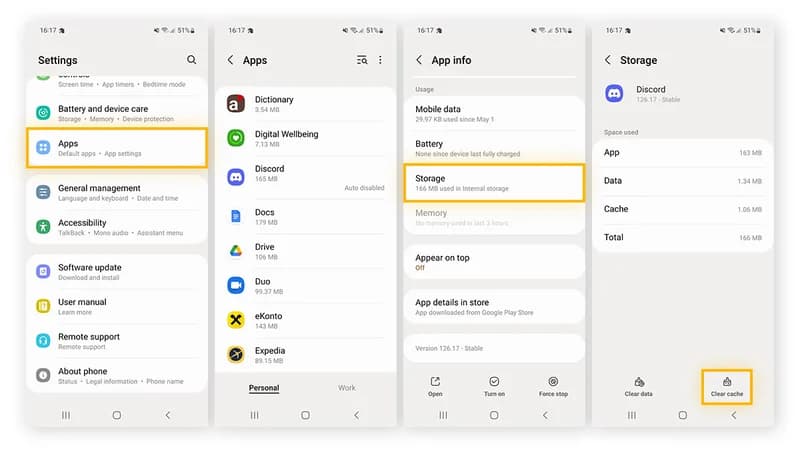
4. Deleting the System Error Log
If you're tired of cleaning memory using standard methods and have tried every possible app to speed up your system, it might be time to try less obvious tools.
For example, you can delete the SysDump log, which contains accumulated data about your system's status.
This log is intended to record errors in the operating system and, over time, can contain a large amount of data that, for the average user, is not very useful.
To access the hidden menu where the error log is located, enter the secret code *#9900# in the "Phone" app (to evaluate the effectiveness of this cleanup, check the amount of free memory on your smartphone before entering the hidden code). After entering the combination, you will access a hidden section where you must select the "Delete dumpstate / logcat" option. Simply press it and wait for the cleanup to complete. The operation will be successful when you see the message "Dump result — Delete Success". Press "OK" and you will exit this menu.
This procedure will delete all system error entries stored in your smartphone's memory.
Access "Device Storage" again to check how much memory you have freed up. If your phone is a few years old, this method will likely free up around 1GB of internal memory.
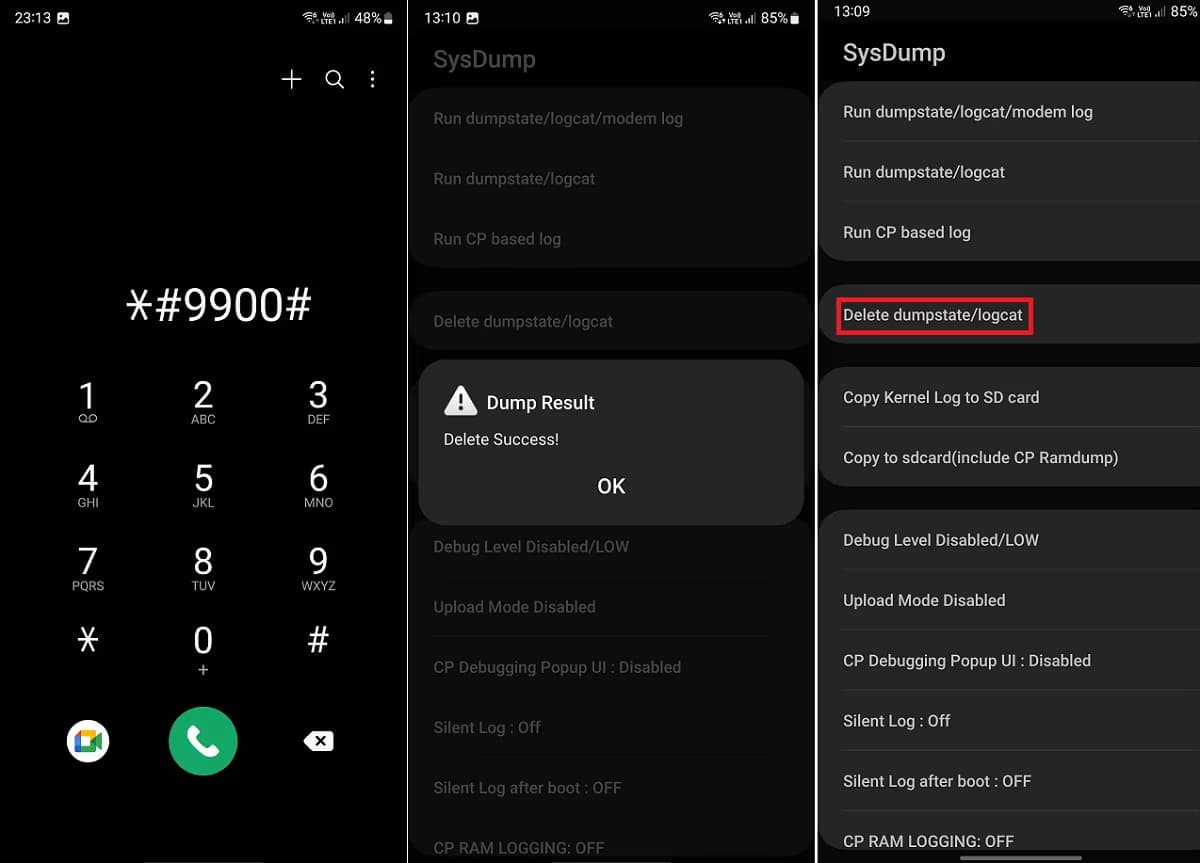
5. Clearing the system data cache from a special hidden menu
It's no secret that not all of your smartphone's cache needs to be cleared—sometimes it's simply necessary for the device's normal operation. For example, the browser cache allows website pages to load faster, and the cache generated by the virtual machine (Dalvik cache) is cleared automatically, requiring no additional action from the user.
However, there is one type of cache that should be cleared, as it can cause problems with your phone's operation. We'll explain how to clear the system data cache using a special hidden menu.
* Be careful when using this recommendation, as it covers basic smartphone functions that, if performed incorrectly, can lead to the loss of your device's functionality.
This tool is accessed through the Android Recovery menu, which, in addition to clearing the system cache, gives users access to other hidden functions of the Android operating system.
For example, from this menu you can reset the system to factory settings, test the graphics card, or verify the overall system integrity.
To wipe the cache using the Recovery menu on Android devices, follow these steps:
- Turn off your smartphone.
- Connect the USB cable to the charging port and to a computer.
- Press and hold the power button and the volume up key on your phone until the secret menu appears on the screen.
- Use the volume down button to scroll to the "Wipe Cache Partition" option, which quickly wipes the system data cache on your smartphone.
- To confirm the wipe, press the power button.
- On the next screen, the device will ask you again to confirm your choice. Use the volume keys to select "Yes" and wait for the wipe process to complete.
- Once you return to the menu, select "Reboot system now" and wait for the device to reboot.
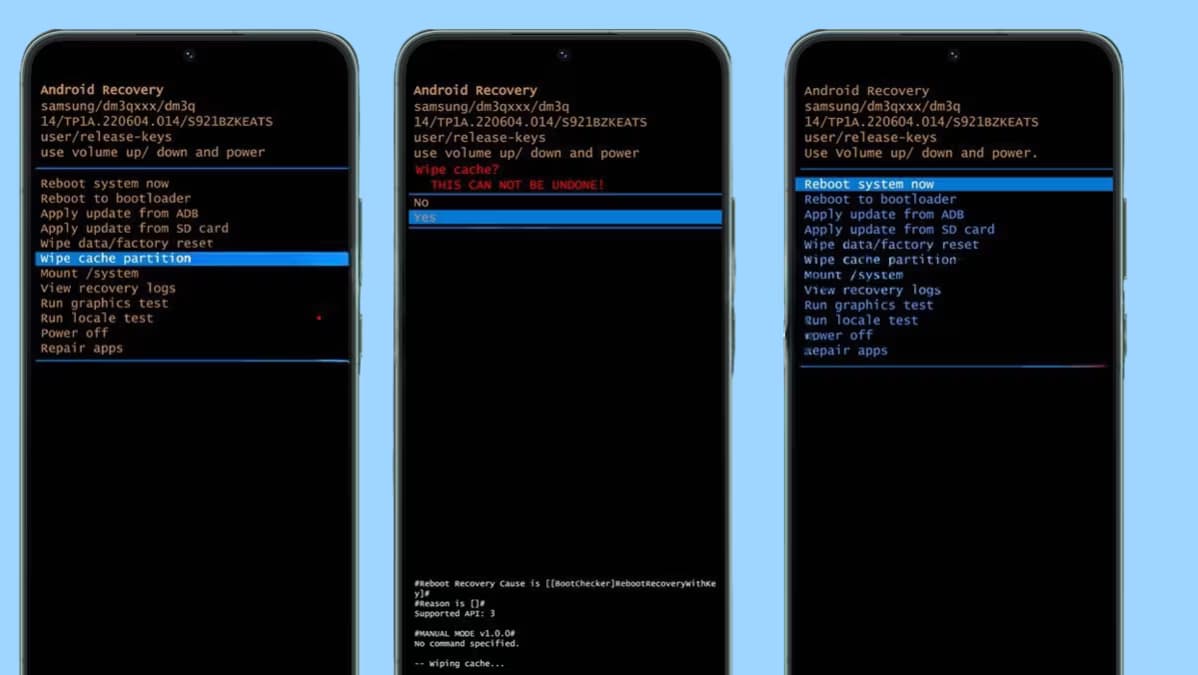
6. Free up storage space
Do you like to photograph everything around you, including cats, dogs, houses, cars, the sky, and, of course, yourself? Is your hand always reaching for the camera to record a 10-minute Full HD video of the last autumn leaves swaying on a branch of an old birch tree? Then don't be surprised if sooner or later you notice your smartphone starting to slow down.
Your device's memory fills up not only with apps but also with media content you create yourself. Surely, your gallery contains a ton of failed or simply outdated photos and videos that you should delete to free up memory and prevent your smartphone from freezing.
The easiest way is to go to your phone's Gallery, manually select the media, tap the icon with the three dots, and choose "Delete".
Life hack: To select a bunch of photos at once, you don't need to tap on each one separately. Press and hold the first one and simply swipe down, up, or sideways; this will select all the images.
7. Transfer data to the cloud
A more user-friendly option for multimedia content is to transfer it to cloud storage. You can safely clear your device's memory, while photos and videos will still be available in the cloud and accessible at any time.
There are two methods for transferring content to the cloud: automatic and manual. Let's start with the former.
- Automatic: Open the Google Photos app on your device, then log in (you must have an active Google account, which you already have if you use, for example, the Play Store). In the top right corner, select the profile icon → Google Photos Settings → Cloud Backup, and then activate the feature with the slider. Done, all the photos you take will now be automatically backed up to the cloud.
- Manually: If for some reason you don't need automatic backup, you can copy specific content to the cloud manually. To do this, in the Google Photos app, open the image by long-pressing it, then select "Copy to Cloud" from the menu that appears. You can delete the photo from your device later.
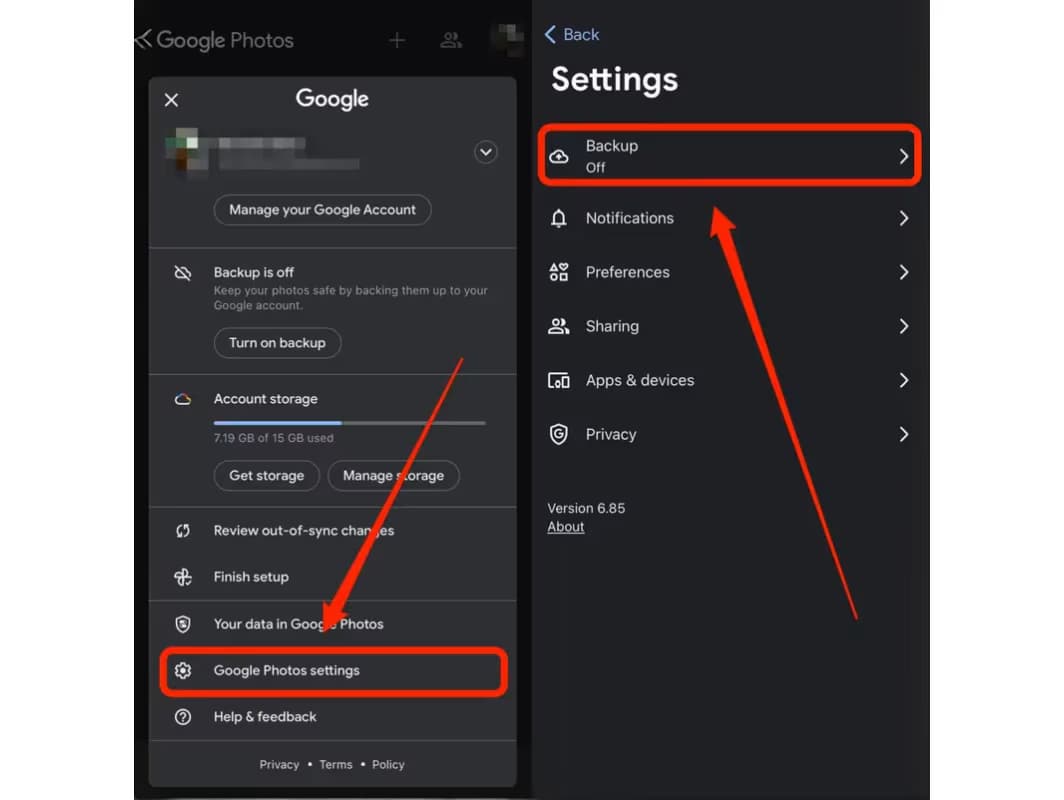
8. Power Saving Mode
Sometimes, freezing or slowing down of your device can be related to it entering power saving mode. To check, go to Settings → Battery → Power Saving Mode and review all the options. A scheduled power saving mode (which you should disable) or a power saving mode based on the battery charge level may be configured here.
On some devices, this mode may activate by default when the charge reaches 50%, which significantly slows down the system. If your phone slows down and this bothers you, disable all possible options that cause the device to enter power saving mode.
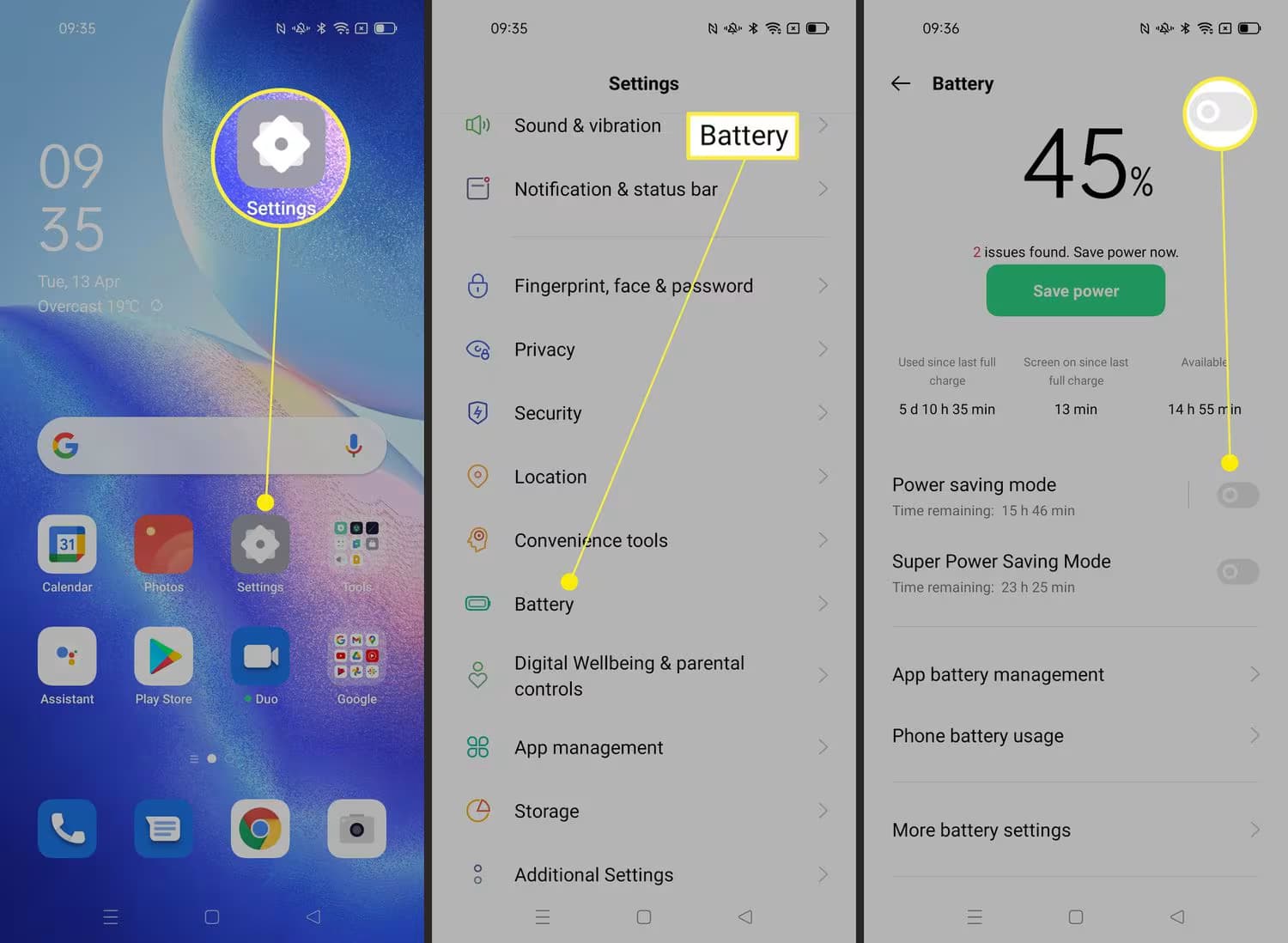
9. Viruses
Malicious apps don't always "lock" your smartphone when installed. They usually operate covertly, collecting your data or using system resources, for example, to mine cryptocurrency, which significantly slows down your device's performance.
On the base version of Android, you can perform a virus scan without downloading additional programs by doing the following: go to Google Play (Play Store) → access your profile → Play Protect → tap "Scan".
The scan will begin, and upon completion, the result will appear on the screen with recommended actions. Don't forget to update your phone regularly to ensure you always have the latest antivirus signatures on your device.
10. Speed Up Your System Using the Developer Menu
You can also improve your device's speed with just a few clicks using some hidden features. Most of these features are found in the developer menu, which is hidden from ordinary users within the Android operating system. Activating this menu is quite simple.
To enable developer mode:
- Open "Settings" and go to "About phone" → "Software information".
- On the system information page, tap 7 times in quick succession where it says "Build number".
- After each tap, the system will inform you of how many steps are left to activate the mode, and then the coveted secret menu item will appear in your phone's settings menu.
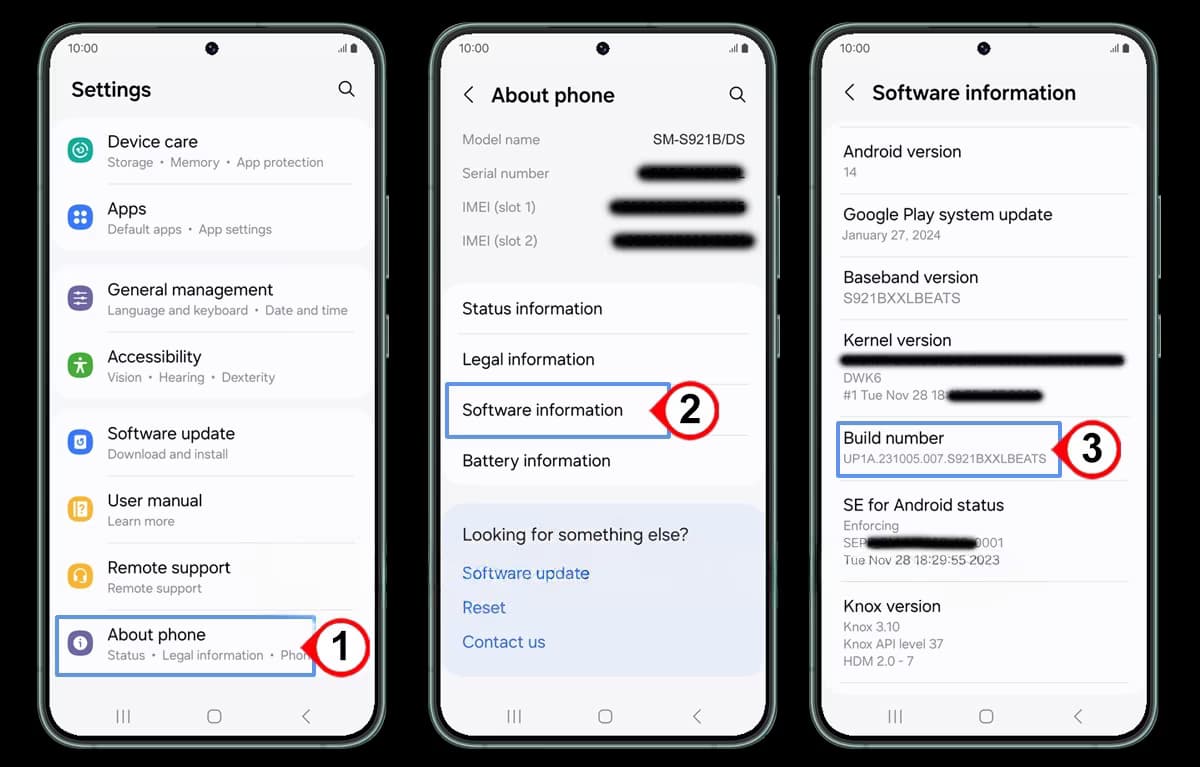
In the developer menu, you can find several options that will help speed up your phone. We recommend the following:
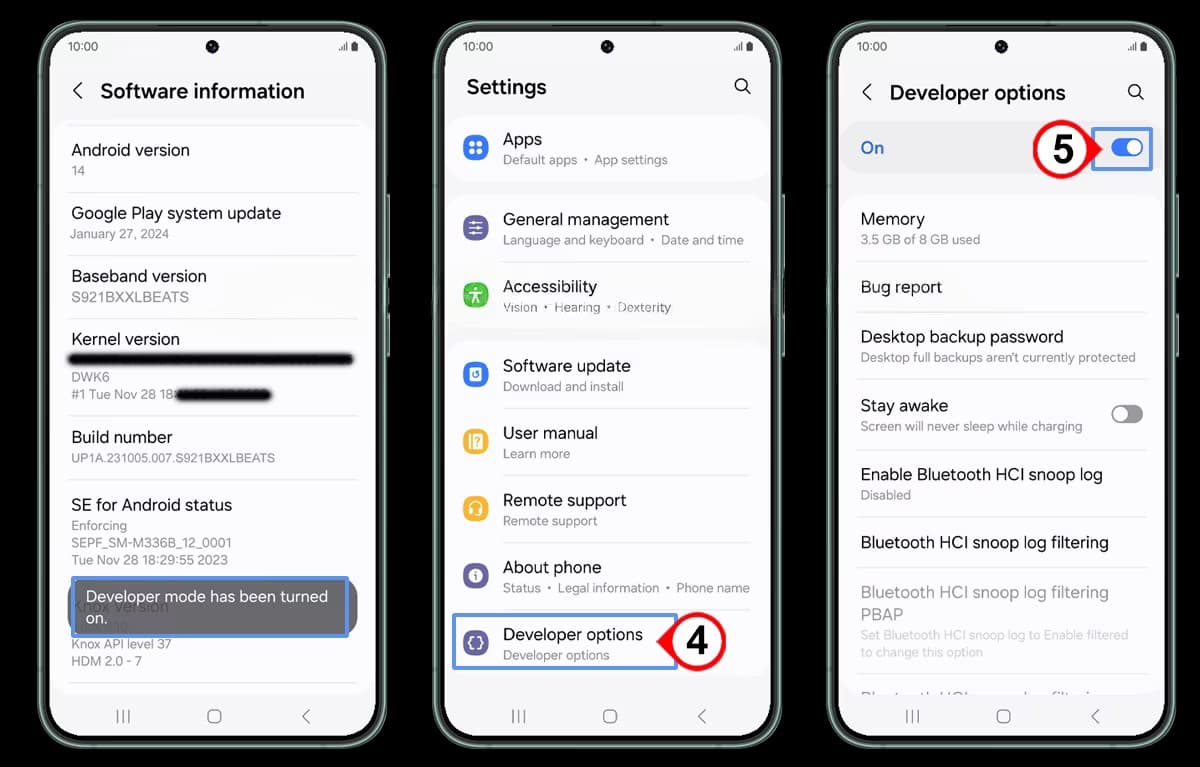
No. 1. Graphics Accelerator Settings
The first step toward a faster operating system without slowdowns is hidden in the "Rendering Hardware Acceleration" settings and is called "Disable Hardware Overlay". By default, any app on your smartphone is rendered by either the main processor or the graphics accelerator as needed.
The Hardware Overlay feature allows you to force apps to render their interfaces using the GPU, thereby freeing up some of the central processor's resources to improve performance.
Disabling Hardware Overlay allocates a portion of the video memory to each app used on your phone. Despite all the advantages, when enabling this feature, you shouldn't forget about balance. For example, if your smartphone's GPU is too weak, it can limit the processor in the final rendering, and vice versa. In demanding apps, the main processor cannot provide tasks to the video accelerator in time, so you may face performance issues.
No. 2. Disable Multi-Antialiasing
The next step to speed up your phone is to disable the "Enable 4x MSAA" option ("Force 4xMSAA"). This feature, also known as multi-antialiasing, allows for greater contour detail in games and is primarily designed for high-performance smartphones.
Thanks to Selective Object Scaling technology, enabling this setting improves graphics in games, making the image smoother and pixels less visible.
If your phone doesn't perform well, constantly overheats, or loses charge quickly, you should disable this feature.
No. 3. Animation Settings
You can make your smartphone faster and increase the speed at which apps and windows open by adjusting the animations ("Window Animations", "Transition Animations", and "Animation Duration", which are hidden in the "Rendering" settings group).
By default, these items have an animation value of 1x. Typically, this number indicates the animation speed, ranging from 400 to 600 milliseconds.
To reduce the opening time of windows and achieve smoother transitions between apps, you can reduce this value to 0.5x or disable the animation altogether by selecting "No animation".
This will increase the speed of working with apps and make your smartphone run faster—at least visually.
No. 4. Increase RAM by limiting background processes
Many Android users mistakenly think that minimized apps are the source of low RAM on their smartphones, but this isn't entirely true.
When an app is minimized, it actually stops being active, but it still caches some data on the system, allowing you to return to it quickly if necessary.
Some apps' background processes and services are much more "greedy," continuing to drain phone resources even after closing them. Some of them, such as the processes that handle social media notifications, are actually necessary. However, there are others that can be eliminated.
You can significantly reduce RAM consumption in standby mode and improve smartphone performance by forcibly limiting the use of background processes.
In the developer menu, there are several settings that offer extensive control over your phone's background processes. For example, with the "Background Activity Displacement" setting, you can limit the operation of apps after they've been downloaded, and with the ANR in Background Mode setting, you can display notifications when an app running in the background stops responding.
To speed up your smartphone, we're most interested in the "Background Process Limit" setting. With this, you can manually limit the number of background processes running on your phone and thus control the use of third-party services while the device is in use.
By default, this setting is set to "Standard Limit". However, if your phone has recently become too slow, we recommend changing the value to "No more than 2-3 processes". This will limit background processes and reduce RAM consumption on your smartphone.
If, after enabling the background process limit, you stop receiving important notifications from email or social media services, return its settings to their original state.
In conclusion
There are numerous factors that can contribute to a phone slowing down or freezing, and not all solutions are available to the average user, sometimes requiring the intervention of a specialized technician.
However, tasks such as deleting unnecessary files, clearing temporary data, and scanning for malware can be performed by any user in a matter of minutes.
As a final recommendation, before proceeding with any corrective measures, simply restart your device; this action may be enough to resolve the problem.




Comments